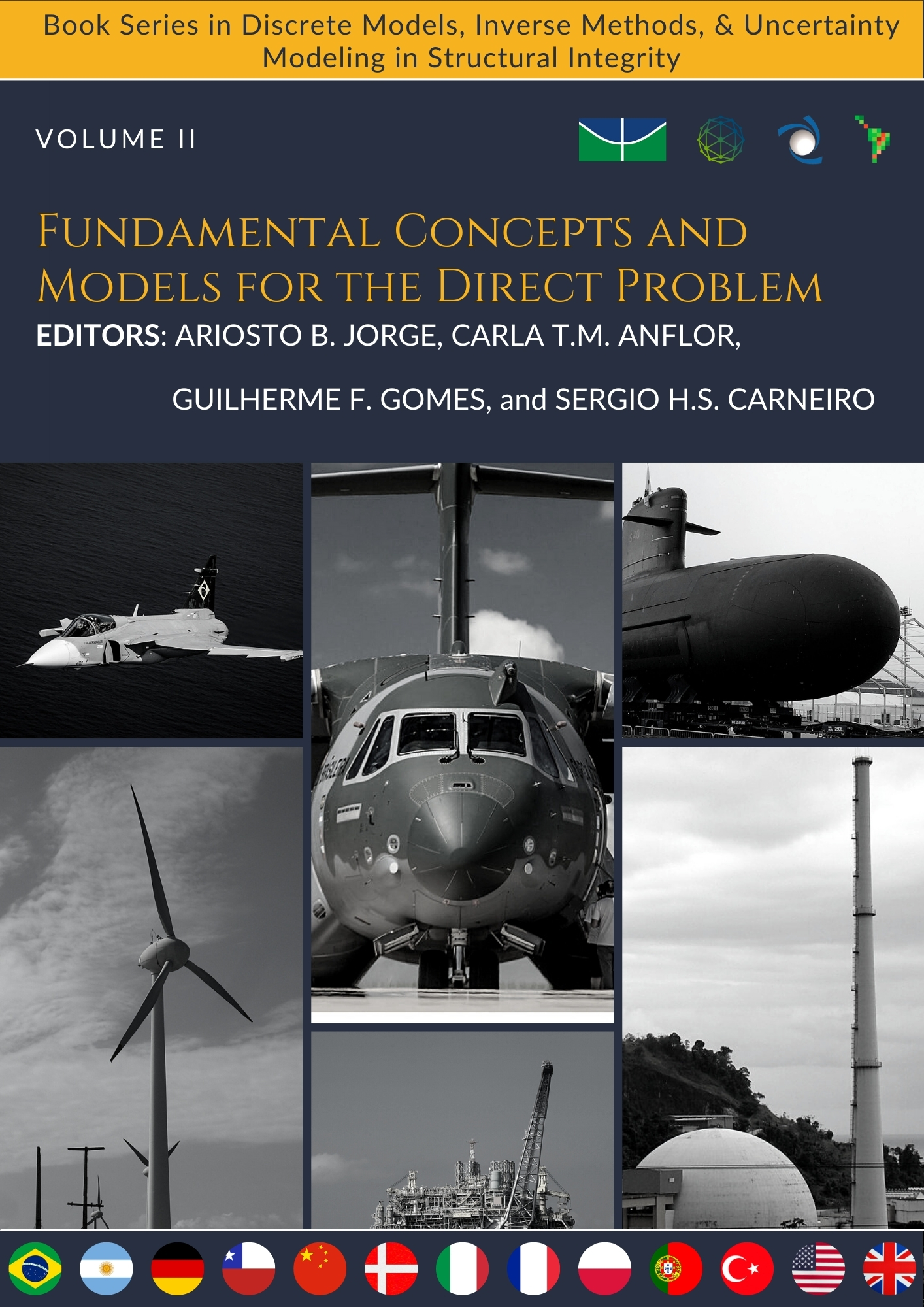Book Series - Volume II

Fundamental Concepts and Models for the Direct Problem
– Chapter 1. Introduction to the Direct Problem: Materials, Technologies, and Discrete Modeling
Part I – Technologies, Structural Integrity & Material Modeling
- Chapter 2. Technologies and Materials Issues Related to Naval and Ocean Engineering
- Chapter 3. New Advances in Thermoplastic Commingled Composites: Processing and Molecular Dynamics
- Chapter 4. The Influence of Weaving Patterns on the Effective Mechanical Response of Reinforced Composites – A Study Through Homogenization
- Chapter 5. Auxetic Structures: Parametric Optimization, Additive Manufacturing, and Applications
- Chapter 6. Additive Manufacturing of Ti-Alloys for Aerospace, Naval and Offshore Applications
- Chapter 7. Review of Low Cycle Fatigue: Issues in Naval and Offshore Engineering
- Chapter 8. Modeling of Damage in Turbine Blades for Large Deformations
- Chapter 9. Stresses on Expansion Joints Used in Penetrations
- Chapter 10. Leak-Before-Break Technology for Piping in Nuclear Industry
- Chapter 11. Fatigue Control in Angra Nuclear Power Plants
- Chapter 12. On the use of Modal Test Data in Inverse Problems: Fundamentals and Applications
- Chapter 13. Application of Deep Learning Techniques for the Impedance-based SHM to the Oil & Gas
Chapter 14. Noise, Vibration, and Health and Usage Monitoring Systems (HUMS) of Aircraft Dynamic Components - Chapter 15. On Vibration Analysis and Health and Usage Monitoring Systems (HUMS) of Dynamic Components of Helicopters
- Chapter 16. Model-Based Parameter Identification for Helicopter Main Rotor Balancing and Tracking Using Once-per-Revolution Vibration Data
Part II – Discrete Modeling: Finite Element, Boundary Element, Meshfree Methods
- Chapter 17. Finite Element Method for Structural Integrity Problems
- Chapter 18. An Application of Finite Element Method and Sensitivity Analysis in Structural Dynamics
- Chapter 19. The Boundary Element Method for Potential Problems
- Chapter 20. The Boundary Element Method for Structural Problems
- Chapter 21. The Boundary Element Method for Damage Modeling
- Chapter 22. Application of Roving Mass Technique Associated with Wavelet Transform to Structural Damage Detection and Localization
- Chapter 23. Local Mesh Free Methods in Linear Elasticity and Fracture Mechanics
- Chapter 24. Meshless smoothed point interpolation methods for damage modelling
- Chapter 25. A New Non-Iterative Reconstruction Method for Solving a Class of Inverse Problems
